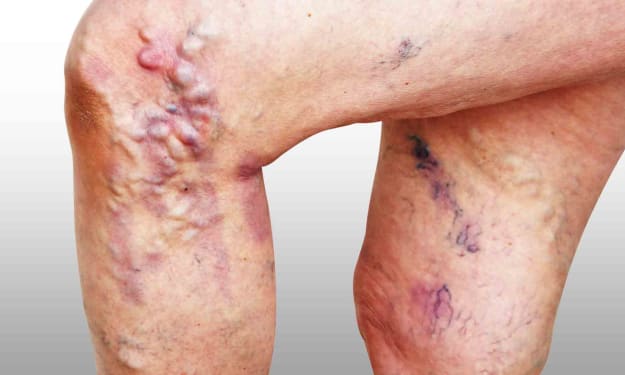Why Are Women More Prone To Varicose Veins?
Varicose veins treatment

Varicose Veins are rooted out due to chronic dilation of the vein, which is a condition known as “varicosity”. When the walls of veins are pushed apart, the valves do not seal properly which creates difficulty for muscles to push blood upwards. Because of this poor blood circulation, instead of flowing of blood from one valve to the other, blood starts pooling in the veins, hence increasing the venous pressure causing the twisting and bulging of veins.
Multiple studies have shown that women are more prone to varicose veins than men because of progesterone hormone present in women’s body. Progesterone is a hormone which is produced by men as well as women, but its level is quite higher in women as compared to the men. In 2009, many studies have revealed that women who were suffering from varicose veins had a much higher level of progesterone in their body as compared to the level of hormone present in the women who did not have varicose veins.
Relation Between Progesterone Levels And Varicose Veins
Progesterone hormone contributes to the maintenance of several organs and menstrual cycle, but it also provides relaxation for the blood vessel walls. Researchers believe that when these walls are relaxed, tiny blood vessels present within these valves also relax and the pressure is applied in both sides of the vessels because of which veins become weak. As women have progesterone hormone present in their body than men, so scientists believe that this is at least one of the reasons women are more vulnerable to varicose veins.
An American college of Phlebology conducted research, which states that 50 percent of American women are suffering from varicose veins and other vein related problems and disorders. Certain people are more prone and liable to varicose veins than others, they include:
- Women are considered to be four times more vulnerable to varicose veins than men. Researchers say that 50 percent of American women experience varicose veins and other vein related issues at some stage in their lives.
- People who have veins varicose in their family are also prone to it more. Heredity matters a lot; if veins varicose are present in the prior family then they are likely to travel through generations.
- Varicose veins are common in older people. One out of two people suffer from the issue over the age of 50 year and women are more likely to have it. When women get older, varicose veins become more prominent and visible.
- There are several other factors which are the reason why women are more vulnerable to viscose veins:
- During pregnancy, there is a change in hormonal level in women which causes varicose veins.
- During pregnancy, there’s a constant pressure in the pelvic area, which causes pressure in pelvic veins. This expands the size of veins and as a result, they get damaged.
- Menopause is an important factor for varicose veins in older women.
- Women who use contraceptives have an increased level of estrogen in their body, which causes varicose veins.
- Fluctuation in the hormonal level during menopause is also a reason for varicose veins.
- Inactive daily life routine
- Increase in body weight and obesity
- Injury in the leg
- Constipation or pregnancy repeated heavy lifting and strain in the lower body.
Varicose veins treatment is easily accessible now a day. One should not take the issue frivolously and consult a medical specialist immediately if any of the symptoms appear. Varicose veins caused during pregnancy mostly disappear with 3 to 4 months after delivery but if they do not fade away on their own then there is need to consult a doctor right away.
We want you to feel safe and healthy. Visit Complete Medical Wellness Center today for a consultation.
About the Creator
Medi Check
Health and Medical awareness, useful medical tips, new medical innovations.






Comments
There are no comments for this story
Be the first to respond and start the conversation.